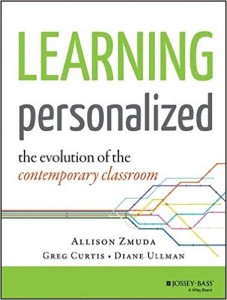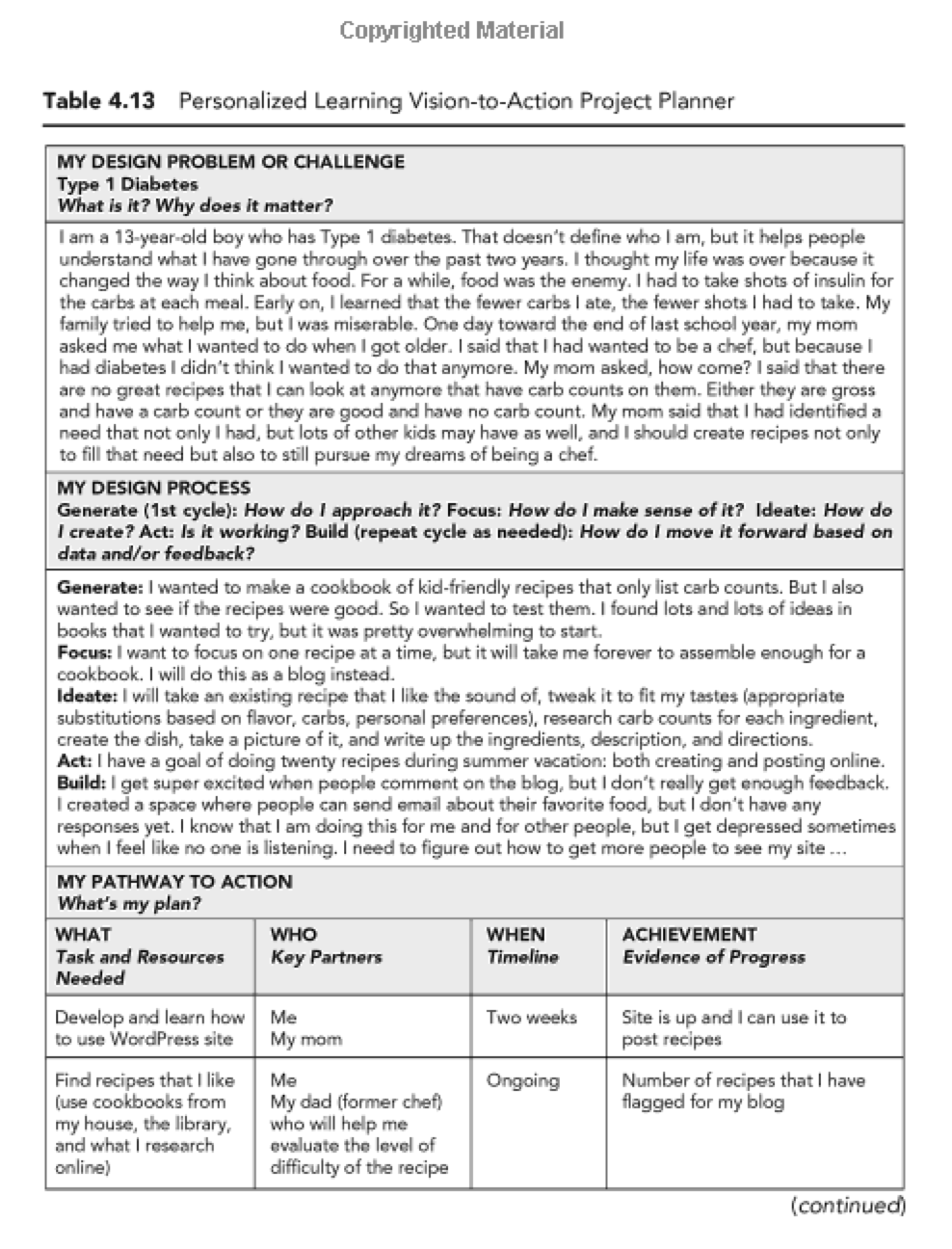Personalizing Learning for Today’s Students
Learning Personalized: The Evolution of the Contemporary Classroom
By Allison Zmuda, Greg Curtis, and Diane Ullman
(Jossey-Bass/Wiley, 2015 – Learn more)
Learning Personalized: The Evolution of the Contemporary Classroom is a resource for educators looking to better design their school’s experiences with students in mind. The primary purpose of the authors is to guide teachers to move from instruction that has minimal student input to instruction that is student-driven, “in which students deeply engage in meaningful, authentic, and rigorous challenges that demonstrate desired outcomes” (p. 7).

Designing personalized learning experiences and identifying tasks that would fit within this concept are the focus in Chapters 3 and 4. Zmuda, Curtis, and Ullman round out the rest of the text by providing profiles of what personalized learning might look like at the classroom level and the school level.
The Book’s Perspective
The authors advocate for “a balanced approach through which the teacher and student collaborate in the design of the learning experience” (p. 14). They convey this concept by describing what personalized learning looks like along a spectrum of student involvement.
For example, with regard to time, a prescribed number of days students attend school involves little student input, while having “schooling take place 24/7, 365 days a year and be determined by outcome-based measures” is a clear distinction (p. 14).
Tackling This Text
When I first opened this book and previewed the pages, I became overwhelmed. There are a lot of charts, figures, and web-based resources via URL that the authors encourage you to explore while reading. How will I manage to follow the thread of this book while taking advantage of the extras?, I wondered.
Reading slowly while tackling this text proved to be wise. I would read a few pages at a time, consider my thoughts, and then put it down for a bit. What I found is, while a lot of extra content was embedded within the body of the text, just about everything proved to be useful and worth my time. I would earmark a page and come back to it later when time allowed.
My usual experience when I read educational resources is that the authors keep their visuals to a minimum or move them to the appendix, most likely on the advice of their editors and publishers. Learning Personalized is not one of those texts. It’s like the authors wanted you to take things slowly and dig more deeply into each profound idea (of which there were many) so they put the visuals where they count most.
For example, Chapter 4 offers several instructional examples provided in the form of “task frames.” They somewhat resemble units of study one might develop via Understanding by Design by Grant Wiggins & Jay McTighe. What makes these examples special is they were created by actual teachers that the authors have worked with as consultants.
In fact, one of the task frames was created by co-author Allison Zmuda herself, outlining her son’s plan for developing a cookbook for young people with diabetes. I appreciated the personalization offered in the figures – something I might have missed had I not taken my time while reading this resource.
The Complexity of Teaching (and Reading)
I could see another reader complaining about the book’s organization. However, my guess is that the reader didn’t take the right approach to reading this resource. Bite-sized chunks followed up with reflection seemed to work the best for me. If one reads this in a linear fashion, they may not gain the deep understanding that is available here.
Learning Personalized is an educational resource that does not shy away from wading into the messiness that is true learning. The complexity is exemplified in the book’s organization as well as in the topic itself. This text does run the risk of collapsing under its own weight with regard to the myriad of content formats shared and how they are presented. Even so, what is offered is too important to not be explored deeply in order to create learning experiences that appeal to all types of students in our schools.
Matt Renwick is a 16-year public educator who began as a 5th and 6th grade teacher in a rural school outside of Wisconsin Rapids, WI. After seven years of teaching, he served as a junior high dean of students, assistant principal and athletic director before becoming an elementary school leader in Wisconsin Rapids. Matt blogs at Reading by Example, tweets @ReadByExample and writes for EdTech magazine and other publications. His first book, Digital Student Portfolios, is available at Amazon. His recent book, 5 Myths about Classroom Technology, is available from ASCD/Arias.



































